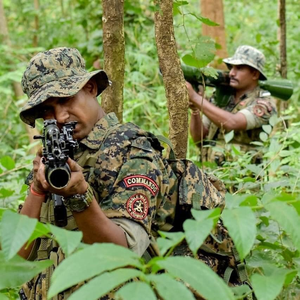New Delhi: India’s efforts to counter Left-Wing Extremism (LWE) have taken a decisive turn in recent years, with the central government reporting substantial progress in containing Naxalite activity across affected regions.
The Maoist insurgency, which has persisted for decades in central and eastern India, has long posed a threat to civilians, security forces and public infrastructure. Between 2004 and 2014, the United Progressive Alliance (UPA) government introduced measures such as the Integrated Action Plan and Operation Green Hunt, combining security interventions with development programs. While these initiatives were considered steps in the right direction, shortcomings in execution, particularly in intelligence coordination and operational consistency, limited their overall impact.
The National Democratic Alliance (NDA) government has adopted a more assertive and coordinated approach. Operations such as Prahar and Octopus, backed by satellite imagery, drone surveillance and human intelligence, have focused on dismantling Maoist infrastructure while minimising civilian harm. The government maintains a policy of conditional engagement, requiring insurgents to surrender weapons before any talks are considered.
Also Read: Government efforts bring down Naxal affected districts from 12 to six: Amit Shah
Alongside security operations, development schemes such as the Pradhan Mantri Gram Sadak Yojana and Bharatmala Pariyojana have been extended to remote tribal areas to improve connectivity and governance. These projects have expanded access to education, healthcare and economic opportunities in regions once cut off from public services. The government’s rehabilitation policy has also led to the surrender and reintegration of several former insurgents through vocational training and financial support.
Violence declines sharply
According to data from the Ministry of Home Affairs, incidents of Naxal-related violence have dropped by 77 per cent, while civilian and security force fatalities have declined by 85 per cent compared to the previous decade. Officials say the numbers reflect a significant improvement in the security landscape of previously affected districts.
Operation Kagar shows ongoing push
One of the largest recent operations, Operation Kagar, is underway in the Karreguttalu forest along the Chhattisgarh-Telangana border. More than 100,000 paramilitary personnel have been deployed to dismantle one of the last strongholds of Maoist activity. As of May 2025, three militants had been killed in engagements, and 44 had surrendered. However, the absence of senior Maoist leaders has raised concerns that they may have fled before the operation began.
Naxal-related figures
- 2024: 287 militants neutralised, more than 1,000 arrested, 837 surrendered across 38 districts
- 2025 (January through May): More than 150 neutralised; six districts remain affected
Despite difficult terrain and the threat posed by armed insurgents, security forces have secured key locations. Combing operations continue, supported by drone surveillance and satellite intelligence. Officials describe the effort as a long-term strategy to restore stability, improve governance and end the decades-long insurgency in India’s interior.
PNN






































